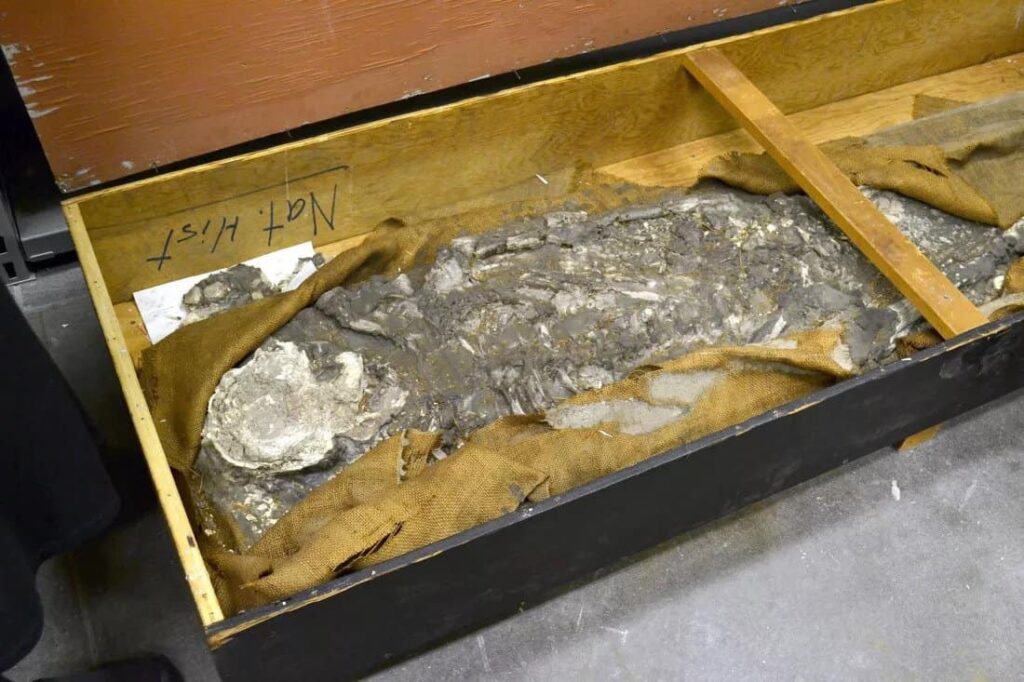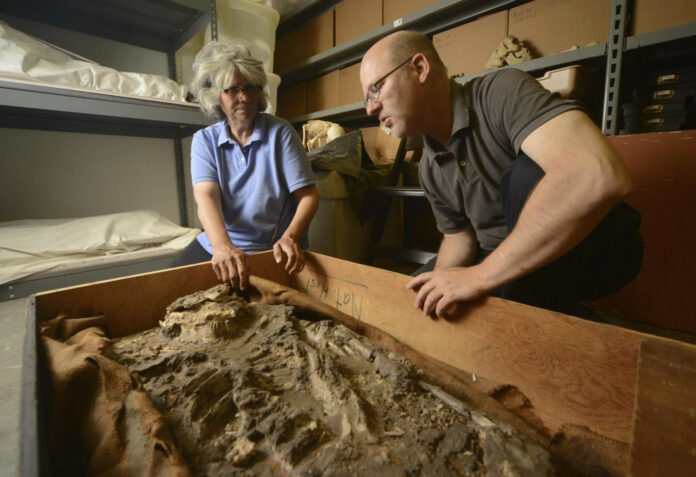The Ancient Mystery Unraveled

In the basement of the Penn Museum in Philadelphia, a fascinating discovery was uncovered—a 6,500-year-old human skeleton, affectionately nicknamed “Noah,” had remained undisturbed in a wooden box for 85 years. This remarkable find, originally unearthed by Sir Leonard Woolley during his excavations at the ancient site of Ur in present-day Iraq between 1929 and 1930, had long been thought lost until its recent rediscovery.
Excavation of a Forgotten Era
Woolley’s dig at Ur is famous for revealing the renowned Mesopotamian “royal cemetery,” which houses hundreds of graves and 16 tombs filled with cultural artifacts. However, the archaeologist and his team also encountered graves that predated the royal burial site by about 2,000 years, shedding light on a much earlier chapter of history.
A Remnant of the Ubaid Period

Buried nearly 50 feet (15 meters) below the surface of Ur, the team discovered 48 graves dating back to the Ubaid period, roughly spanning 5500 B.C. to 4000 B.C. Recognizing the rarity of such remains from this era, Woolley made the decision to recover a single skeleton, coating the bones and surrounding soil in wax, boxing them up, and shipping them to London and eventually Philadelphia.
The Rediscovery and Its Significance

When William Hafford, the project manager tasked with digitizing the museum’s records, discovered a list that mentioned two skeletons intended for the Penn Museum, he was puzzled—only one was accounted for. After conducting thorough research, he consulted with Janet Monge, the museum’s curator of physical anthropology, who recalled a mysterious box in the basement. Upon opening it, they realized they had uncovered the long-lost skeleton, now known as “Noah.”
Using modern scientific techniques, researchers at the Penn Museum are determined to unveil the secrets of this ancient individual, exploring aspects such as diet, ancestral origins, trauma, stress, and diseases from an era believed to have witnessed a significant flood at the site of Ur.

